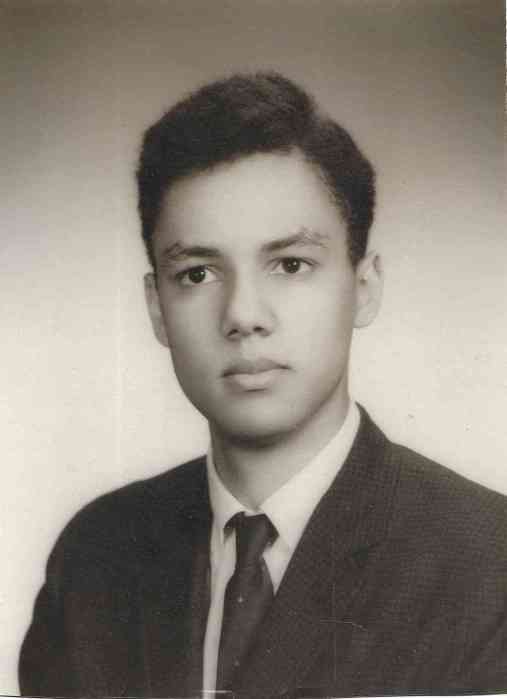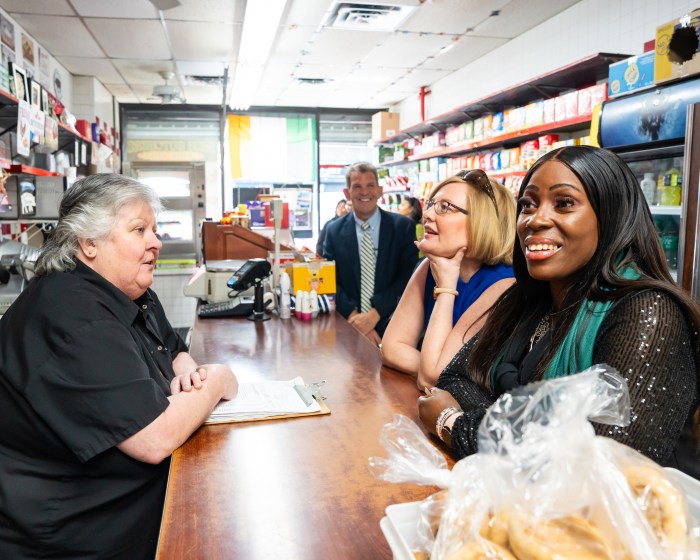James Crump’s striking documentary “Antonio Lopez 1970: Sex, Fashion & Disco” celebrates the Puerto Rican-born, New York-based illustrator whose life was as vibrant and colorful as his drawings. In the late 1960s and early ‘70s, Lopez (1943-1987) cemented a reputation in work for The New York Times, Women’s Wear Daily, and Vogue, among other publications.
The film features stunning photographs and film clips as well as interviews with former models Jessica Lange and Patty D’Arbanville and makeup artist Corey Tippin. Lopez suggested Tippin hone his makeup skills professionally, and the then-teenager followed the illustrator and his romantic and business partner, Juan Ramos, from New York and Andy Warhol’s world to working in film and fashion in Paris.
Tippin recently chatted with Gay City News about Antonio Lopez.
GARY M. KRAMER: What were your first impressions of Antonio Lopez’s work?
COREY TIPPIN: I responded strongly to his drawings in The New York Times. They were so powerful. He realized in his drawings what was in people’s minds. He was able to make the emotion, style, the type of silhouette real.
KRAMER: How did you come to work with him?
TIPPIN: The day I first met him, I was a teenager at Parsons. Antonio and Juan came back to FIT — where they had been students — and taught a course in the Fashion Illustration Department. They appeared with the world’s most fabulous supermodel of the day, Cathee Dahmen. I couldn’t believe what I saw! I was asked to come up onto the platform and pose with Cathee. He picked me out of the crowd. Antonio had chosen me, so I felt special. Later on, he asked me to be in a fashion show, and, thus, I felt I was kind of, naively, being courted.
In the beginning, our relationship was sort of a romance in a sense, but he was romancing lots of people at the same time — which I suspected. We went through that phase of being very sort of romantic. We weren’t a good match, though. Personally, I wasn’t attracted to him that way. I think we tried to have a little relationship, but the chemistry wasn’t there.
KRAMER: You became a makeup artist, at his suggestion. What it was like to be involved in the forefront of fashion?
TIPPIN: I don’t think I realized I was in the forefront until I looked at it in hindsight. Antonio said, “Why not be a makeup artist?” I wore makeup myself. I put it on [models] Jane Forth and Donna Jordan. It made total sense. There were a handful of professional makeup artists then. It wasn’t the profession it is today. But a fashion makeup artist interpreting fashion through makeup was rare.
So right away, I started to get jobs and calls, and I worked with Yves Saint-Laurent. And then the film “L’Amour” came out, and everyone thought we were real movie stars, so I started getting jobs. What helped was I had access to Yves Saint-Laurent and Karl Lagerfeld. They would hire me to do a cover of Italian Vogue and everyone would see it.
KRAMER: You made the film “L’Amour” with Warhol. What do you recall about him?
TIPPIN: My mother got the Village Voice. It had a column that Andy Warhol was casting “Romeo and Juliet,” and my mother called me and said, “Go to the Factory!” So, I did. We got in the service elevator — it was 1966 or ’67 — and I went up and got off the elevator and was in the Factory. Fred [Hughes] and Paul [Morrissey] appeared, and they asked me questions. Then Andy came out, and he said, “Come to a party tonight at Betsey Johnson’s loft for a party for Antonioni,” and I said, “I know Antonio!” And he said, “No, Antonioni” and wrote it down for me. I wish I still had that piece of paper!
KRAMER: I am actually more enamored with Juan Ramos than Antonio having seen the film. What was he like?
TIPPIN: He was beautifully groomed all the time. Smelled heavenly, perfectly short hair, crisp shirts, shaved. He was small in stature, but noble. Desirable. Very quiet and observing, but he had a silly side to him. Very much a contrast to Antonio’s personality. The greatest thing about Juan was his voice. He had this perpetually hoarse voice that really carried. You could always hear Juan’s distinctive voice in a crowd. He was also a great critic — extremely critical. I’m so glad we were friends. He had unflattering nicknames for folks he didn’t like, but we always got along.
KRAMER: Do you ever look back on this time in your life and think, “My God! I can’t believe I lived that and did that?”
TIPPIN: I can’t believe I survived it! My story was a lot of drugs and alcohol. I couldn’t believe they let me hang around. They didn’t drink or take drugs. I was a user and oblivious. We were young and undisciplined. To go to Paris at 18 or 19… I had no supervision and was wild. I found myself in a lot of trouble. How I survived it! That I can remember any of it… I think because it was so powerful for me. I was still growing and absorbing. It was a very formative time. That’s why I remember it so distinctly.
KRAMER: Was there ever a point where anyone or everyone thought, “I need to stop having fun and start to grow up?”
TIPPIN: I think there’s an expiration date on everything. Being an ex-pat put the brakes on things. I was in Paris four or five years. I was modeling. Model agents signed me when “L’Amour” came out. I wanted to leave Paris. I was in a relationship there and I wanted to get out of it. I felt like I wanted to move.
I left Paris and got a job with Pierre Cardin that brought me back to the US, and I just stayed. For five years, I didn’t know anything about American pop culture and I wasn’t assimilating back easily, so that was a big shake-up for me. And then Antonio and Juan came back. You sense when it’s time to give it up and move on to stay fresh.
Fashion was changing. It was getting more natural — which I detested. That’s why fashion is so punishing. You get left on the curb if you are known for something and can’t switch it up.
ANTONIO LOPEZ 1970: SEX, FASHION & DISCO | Directed by James Crump | Film Movement | Opens Sep. 14 | IFC Center, 323 Sixth Ave. at W. Third St. | ifccenter.com



































